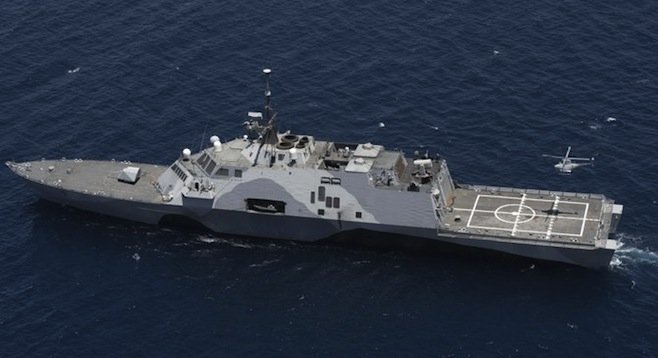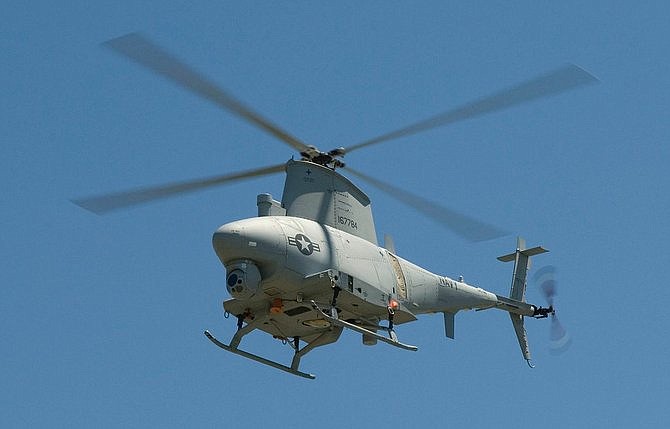 Facebook
Facebook
 X
X
 Instagram
Instagram
 TikTok
TikTok
 Youtube
Youtube

Northrop Grumman, usually second fiddle to General Atomics when it comes to news on local military-drone technology, has announced the first successful series of tests involving unmanned aircraft flying a mission jointly with pilot-operated craft.

The tests were conducted on May 12 onboard the USS Freedom off the coast of San Diego and involved the MQ-8B Fire Scout helicopter drone and MH-60R Sea Hawk, a piloted helicopter designed for maritime search-and-rescue missions.
The Fire Scout is designed to take off and land autonomously from a war ship and can stay in the air for up to five hours, significantly longer than occupied helicopters. The drone's intended use is largely for reconnaissance and surveillance, as opposed to the more lethal operations carried out by General Atomics' Reaper and Predator aircraft.
The drones, which cost taxpayers approximately $18.2 million each, have flown for over 12,500 hours since their introduction in 2002, though joint operations with manned craft are a recent development.
According to the Navy, 28 Fire Scouts are in service, with an eventual planned fleet of 96; that figure is down from an original projected order for 168.


Northrop Grumman, usually second fiddle to General Atomics when it comes to news on local military-drone technology, has announced the first successful series of tests involving unmanned aircraft flying a mission jointly with pilot-operated craft.

The tests were conducted on May 12 onboard the USS Freedom off the coast of San Diego and involved the MQ-8B Fire Scout helicopter drone and MH-60R Sea Hawk, a piloted helicopter designed for maritime search-and-rescue missions.
The Fire Scout is designed to take off and land autonomously from a war ship and can stay in the air for up to five hours, significantly longer than occupied helicopters. The drone's intended use is largely for reconnaissance and surveillance, as opposed to the more lethal operations carried out by General Atomics' Reaper and Predator aircraft.
The drones, which cost taxpayers approximately $18.2 million each, have flown for over 12,500 hours since their introduction in 2002, though joint operations with manned craft are a recent development.
According to the Navy, 28 Fire Scouts are in service, with an eventual planned fleet of 96; that figure is down from an original projected order for 168.
Comments